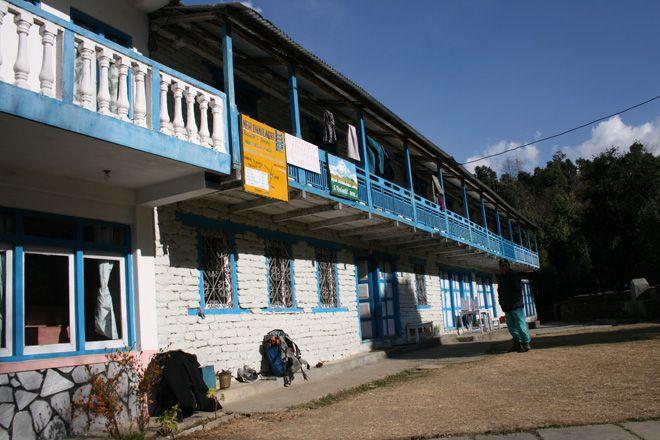What are Tea Houses?
Along the Annapurna Circuit, the Everest Base camp trek routes and beyond the Gokyo Lakes, the most popular form of accommodation is the tea houses. As not everyone knows what staying at tea houses entails,

Tea House on Annapurna Circuit. Photo courtesy of S Harbert
Along the Annapurna Circuit, the Everest Base camp trek routes and beyond the Gokyo Lakes, the most popular form of accommodation is the tea houses. As not everyone knows what staying at tea houses entails, we thought we'd answer some common questions so you know what to expect!
What are the rooms like?
The rooms are simple but comfortable. Most rooms have twin beds and mattresses. Pillows and sleeping bags are provided, however on the Manaslu Circuit people have to take their own sleeping bags. You probably won't spend too much time in the rooms, though, except for when you're sleeping. There is a communal dining area, warmed by a wood or yak-dung burning stove, where most trekkers relax for the evening – playing cards, writing the next entry in their travel journals or sharing tales of their adventures along the Annapurna Circuit or the route to Everest Base Camp. There are also simple toilets and, in most cases, the opportunity to have a hot shower.
A major advantage of staying in tea houses is that you don't have to carry sleeping mats, tents and cooking gear!
How about the food and drink?
As the name suggests, there's plenty of tea! There's also delicious local food, cooked by the women, who can also rustle up western dishes for trekkers who need a home comfort. However, the traditional staple is Dal Bhat. Don't expect to see your trek leader eating much else! Give it a try: there's a reason it's well-loved.
Tea houses often have a small selection of items for sale, providing anyone on a longer trek like the Annapurna Circuit with a chance to stock up on biscuits and chocolate bars. Bottled drinks are also available, but we don't encourage anyone to buy these, as the bottles become an environmental nuisance. Resist the urge to have a beer – it's not advisable to drink at altitude.
Are there any other advantages?
Absolutely! Tea houses are an important source of income for the local people, who have few employment options in this region. Many of them are run by women; the income allows them to break out of restrictive traditional roles. Staying at tea houses all the way around the Annapurna Circuit or all the way to Everest Base camp is really beneficial to the local people. You'll also have the chance to meet these people and speak to some of them, thereby learning more about the region you're trekking through.
Are there any disadvantages?
The only real disadvantage is that tea houses tend not to exist in significant numbers away from the main routes, meaning that anyone who wants to trek in more remote regions has to camp – and therefore carry camping equipment. However, we get around this concern by taking our trekkers away from the main routes – such as the dirt road on the Annapurna Circuit – during the day, returning to the tea houses in the evening so that our trekkers can enjoy comfortable nights.